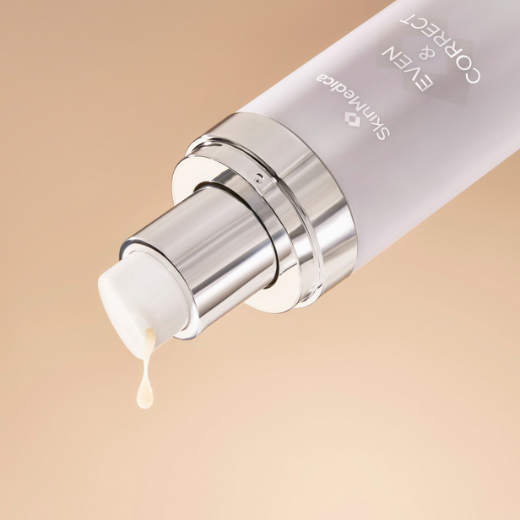What Is Melasma? Everything You Ever Wanted to Know
Posted by Nikki Wisher on Jul 19th 2024
Wouldn’t it be amazing to be able to just walk out of the house with no foundation on and feel great about how your skin looks? I’m not above a run to the store sans makeup, but I’m definitely not making eye contact with that self-checkout camera knowing that all I’d see there is blotchy skin. There are a lot of different reasons people feel self-conscious about their skin and one of the many is a condition called melasma.
What Is Melasma?
Melasma is one of those skin conditions that’s actually pretty common but that flies under most people’s radar because it’s a pro at camouflage. Melasma is skin discoloration (typically brown spots or patches) caused by hormones. Everyone’s skin contains cells that produce pigment and that’s what gives each of us our specific skin color. Certain hormones and hormonal changes can trigger those cells to go overboard and produce too much pigment in certain areas. Sun exposure often plays a part too, triggering even more pigment production.
Most of the time, melasma happens during pregnancy. In fact, it’s nicknamed “the mask of pregnancy” because it makes some pregnant people look like they’re headed to a masquerade ball (your skin’s just trying out a Bridgerton-inspired fashion trend). It can happen at other times in life too, especially when you’re going through hormonal changes like starting hormonal birth control.
What Does Melasma Look Like?
The tricky thing about melasma is that it can look exactly like other types of skin hyperpigmentation like age spots and even freckles. It creates spots or patches on your skin, usually a little darker than your natural skin tone although sometimes they have a bluish-gray look to them too. Melasma primarily shows up on your face, especially your forehead, cheeks, chin, and upper lip. Sometimes it can make an appearance elsewhere too in areas like your neck or arms – mostly areas that are exposed to the sun.
As I mentioned, melasma can look a lot like age spots or freckles, and you may not be able to tell the difference without consulting your dermatologist. But there are a few clues to look for. First, usually age spots are relatively small while melasma can create larger spots or patches. Second, melasma appears on both sides of the face at the same time while age spots pop up one at a time.
Who Can Get Melasma?
Anyone can get melasma, but there are some patterns that stand out. It mostly affects women – 90% of people with melasma are women. Sorry, sis. It’s also notable that melasma is more common in women who have medium or dark skin tones. The darker your skin tone, the more melanocytes (pigment-producing cells) you have, so you’re more susceptible to melasma and other types of over-pigmentation.
Truth be told, while melasma isn’t talked about very often, it’s surprisingly common. According to the Cleveland Clinic, studies have found that anywhere between 1.5% and 33% of the population will have melasma at some point, including between 15% and 50% of pregnant people.
If I Have Melasma, Should I Be Worried?
Finding out that there’s a name for your brown spots might make you nervous, but rest assured that melasma is not dangerous. It’s not a sign of anything being wrong with your skin or your health. It’s essentially a cosmetic issue.

If Most Brown Spots Come from Sun Exposure, Does Melasma Too?
Most of the time, brown spots on your skin come from sun exposure because your body overproduced pigment to protect you from the sun damage. It’s interesting to note that while melasma isn’t caused by sun exposure, the sun does make it temporarily darker. In fact, people with melasma often notice that their melasma is more noticeable in the summer and it fades in the winter. Moral of the story: if you have melasma or suspect you might, be extra careful about protecting your skin when you go outside.
How Do You Get Rid of Melasma?
Now that you’re an expert in melasma and what causes it, let’s talk about what you can do about it.
The good news is that if melasma has popped up during your pregnancy, there’s a good chance that it will go away on its own after you give birth, so you don’t need to do anything yet. In fact, some melasma treatments shouldn’t be used during pregnancy anyway so it’s usually best to wait and see if it goes away anyway.
But melasma can also be long-lasting, whether or not it starts during a pregnancy. If you’re not pregnant, there are plenty of ways to reduce your melasma symptoms.
Skin Care Products
Melasma tends to be a bit more stubborn than other types of hyperpigmentation, but you can still fade it with the right products. For example, the SkinMedica Even Correct Advanced Brightening Treatment is clinically proven to help with melasma. It’s a simple serum you apply twice a day, easy peasy.
Another popular choice is the iSClinical GeneXC Serum. This one-of-a-kind product combines vitamin C (a known powerhouse for evening out skin pigmentation) with a variety of other powerful ingredients to not only tackle melasma but reduce signs of aging too.
If you really want to focus your skin care routine on minimizing melasma, though, it doesn’t get more comprehensive than the Osmosis Pigmentation Kit. This six-piece set truly has a full skin care routine that’s been designed for pigment and melasma care, from cleanser to specialized serum to moisturizer and more.
Keep in mind that skin care products for melasma are typically meant for short term use. If you use your products consistently for 3-6 months and don’t see the results you want, pay a visit to your dermatologist to see what they recommend.

Professional Skin Treatments
If your skin care products aren’t doing the trick or if you want a more intensive solution to your melasma, there are professional skin treatments that can help too. Certain chemical peels, laser treatments, and other therapies can reduce melasma symptoms effectively. As always, though, everyone’s skin and body are unique so no treatment is 100% effective for everyone, so your results will vary.
Boosting Your Brightness with Melasma Skin Care Products
While there are many treatments and products out there with melasma, I want to call out as well that all of this is on a basis of personal preference. Your skin is unique to you and melasma is a cosmetic condition that doesn’t have to be treated – it can just be part of your signature look. But if you do decide to address your melasma, the tips above can help.
P. S. – Don’t forget your sunscreen today!


